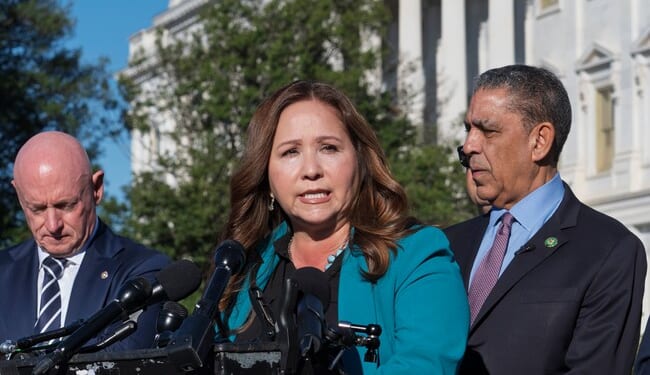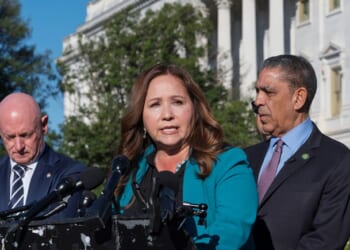The U.S. national debt hit a new record this week, topping $38 trillion for the first time ever as the federal government remained shut down with Democrats demanding free healthcare for illegal aliens.
Figures from the Treasury Department showed that as of this past Tuesday, the nation’s total debt stood at $38,019,813,354,700, marking a historic milestone with the government shutdown in its third week.
Fox Business reported the debt has grown at a record pace this year.
It took just over two months for the national debt to jump from $37 trillion to $38 trillion from mid-August until late October.
Less than a year ago, it had just crossed $36 trillion. Fox Business attributed the rise to spending on Social Security and Medicare obligations, along with rising interest payments from higher Federal Reserve rates.
Michael A. Peterson, CEO of the Peter G. Peterson Foundation, told the network that reaching $38 trillion during a government shutdown was “the latest troubling sign that lawmakers are not meeting their basic fiscal duties.”
“If it seems like we are adding debt faster than ever, that’s because we are,” Peterson said. “We passed $37 trillion just two months ago, and the pace we’re on is twice as fast as the rate of growth since 2000.”
Peterson added that the cost of paying interest on the debt is now one of the fastest-growing expenses in the federal budget, with roughly $1 trillion in annual interest payments.
Over the last decade, the government spent $4 trillion on interest, and that number could reportedly jump to $14 trillion over the next 10 years.
Do politicians need to take the national debt more seriously?
He warned that those costs “crowd out important public and private investments in our future, harming the economy for every American.”
The federal government ended the last fiscal year on Sept. 30 with a $1.8 trillion budget deficit, meaning lawmakers in Washington spent nearly $2 trillion more than the government collected in taxes and other revenue.
The nonpartisan Congressional Budget Office projected that the debt held by the public would rise from about 100 percent of the nation’s total economy in 2025 to roughly 120 percent by 2035.
The agency expects annual deficits to grow to $2.6 trillion by 2035, adding $22.7 trillion more to the total debt.
Peterson separately told Fortune that the U.S. “passed $37 trillion just two months ago, and the pace we’re on is twice as fast as the rate of growth since 2000.”
He said the ongoing government shutdown has only made things worse by delaying budget talks and driving up short-term operational costs.
Past shutdowns have proven expensive, but the Treasury’s Bureau of Fiscal Service warned in its 2024 financial report that “current policy is not sustainable” and that the U.S. had found itself on an “unsustainable fiscal path” if spending continues at this pace, Fortune reported.
According to Treasury Department records, the national debt has climbed dramatically since the pandemic.
It totaled $28.4 trillion in 2021, $30.9 trillion in 2022, $33.2 trillion in 2023, and $35.5 trillion in 2024 before reaching $37.6 trillion at the end of fiscal year 2025.
Advertise with The Western Journal and reach millions of highly engaged readers, while supporting our work. Advertise Today.









